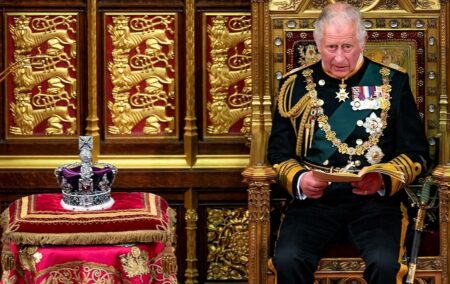The company that finances the activities of Britain’s royal family is undergoing a change, according to reports.
The Crown Estate dates back to 1066, when William the Conqueror invaded England from Normandy and claimed its land ‘in right of the Crown’.
A millennium later, its holdings have shrunk. It owns London property last valued at £7.7 billion; some shopping malls, land outside London, and most of the seabed around Britain.
According to the Wall Street Journal, the assets belong to King Charles only in his public capacity as monarch. In practice, the Crown Estate gives its profit to the UK Treasury, which in turn hands over a semi-fixed cut to the royal family, for it to carry out public duties and pay for five palaces. For the year ended March 2022, this cut – the Sovereign Grant – was £86.3 million, based on a five-year deal agreed upon in 2016.
Payment to the Treasury is now overdue. It should have taken place last year, but the Crown Estate was completing offshore wind-farm licensing deals with European energy companies, so the negotiations were delayed.
The wind-farm agreements were signed in January, bringing the Crown Estate a bonanza of monthly ‘option fees’. The new revenue stream is roughly £1 billion annually.
The wind-farm deals will become the financial core of the company.
Under the current arrangement, the monarchy is due a huge revenue increase. It spent £102.4 million in the year to March 2022, more than the Sovereign Grant, due to refurbishment at Buckingham Palace. The king felt obliged to turn down the increase, and asked for the ‘windfall’ to be ‘directed for wider public good’.
The coastal seabed is a monopoly asset that in most countries belongs to the state. Charles is a longtime champion of green causes. Yet it will make the royal family’s reliance on government funding more explicit.
[Image: House of Lords 2022/Photography by Annabel Moeller, https://commons.wikimedia.org/w/index.php?curid=117865820]

